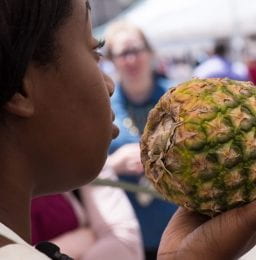
Celebrate the New Year with some simple steps for a fun, healthy, and active event!
- Add activities to get people moving and interacting.
- Festive foods are eye-catching. Fun shapes or a garnish make a dish pop!
- Make ice cubes with 100% juice or added fruit for flavor.
- Savor each bite. Add some flavor with a cultural favorite.
- Alongside party food favorites, have fruit kabobs, vegetable trays arranged for the party theme, and simple swaps like offering whole-grain crackers.
- Let’s dance! Get people up and moving with party games or dancing.
- Sneak in healthier options with simple ingredient swaps or try a new recipe.
- Keep it simple. That can save a lot of stress! Ask guests to bring a favorite food or have them plan party games. Don’t forget to get the kids involved!
- Shop smart to fit your budget. Make a list and shop grocery sale ads for savings. Don’t forget coupons for extra savings.
- Be an example for healthy habits. The kids are watching!
Source: www.choosemyplate.gov/ten-tips-make-celebrations




